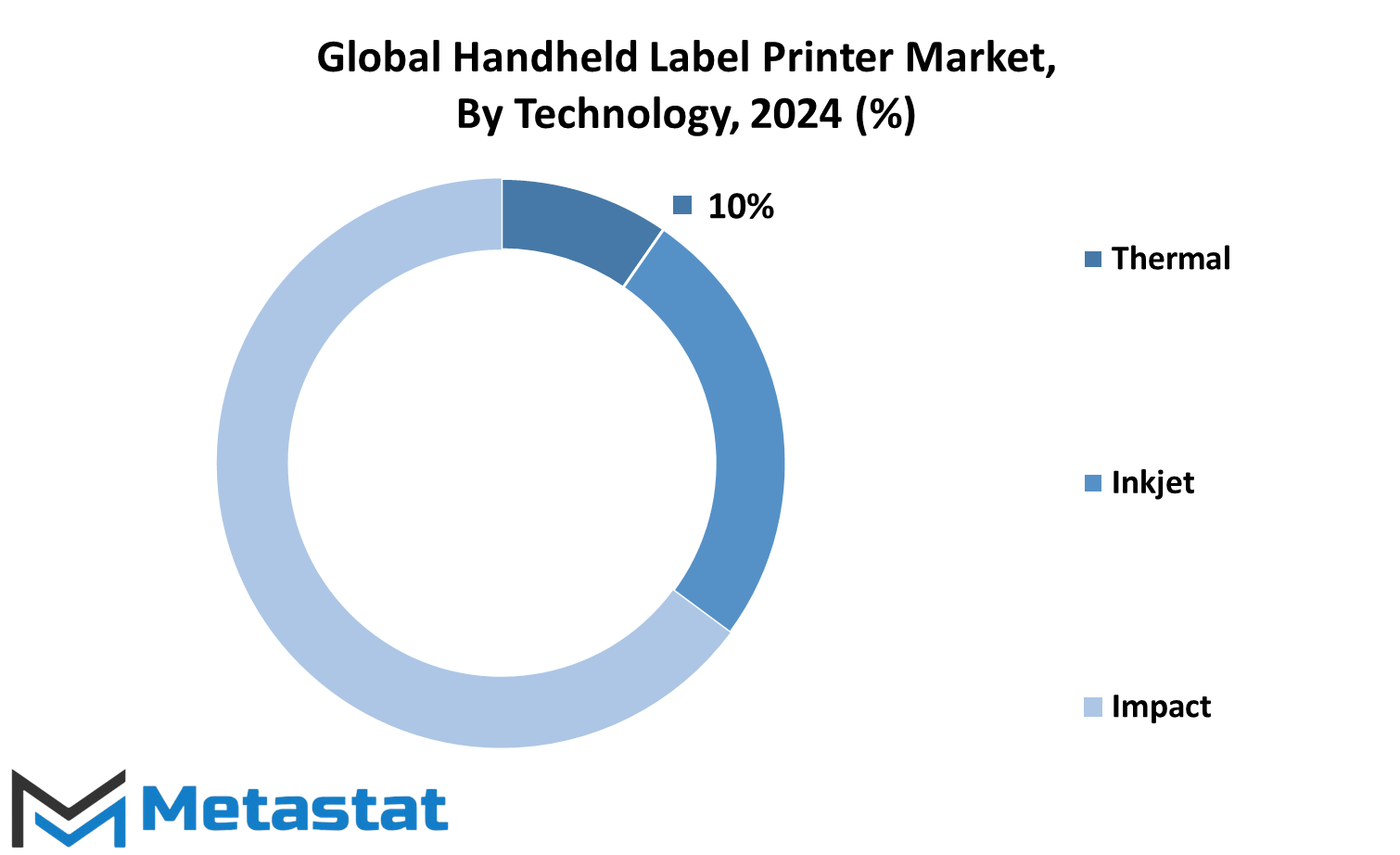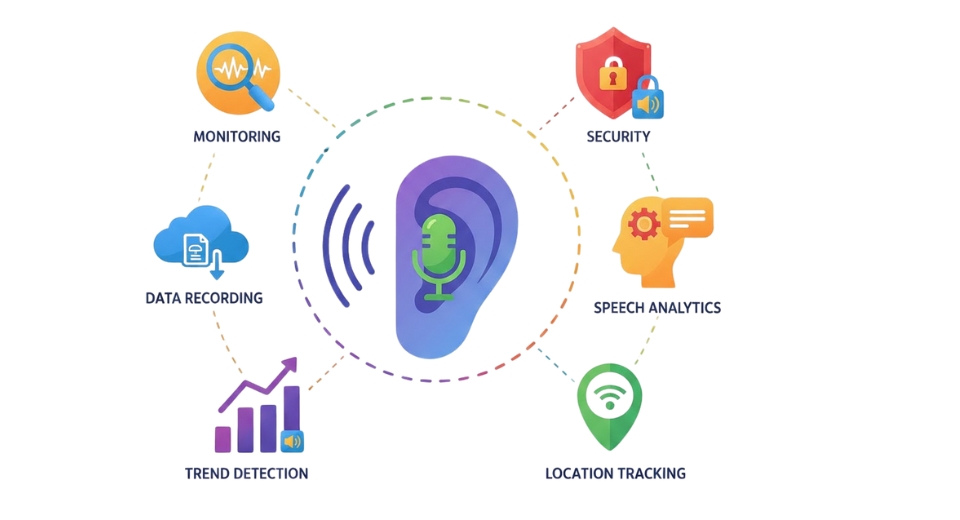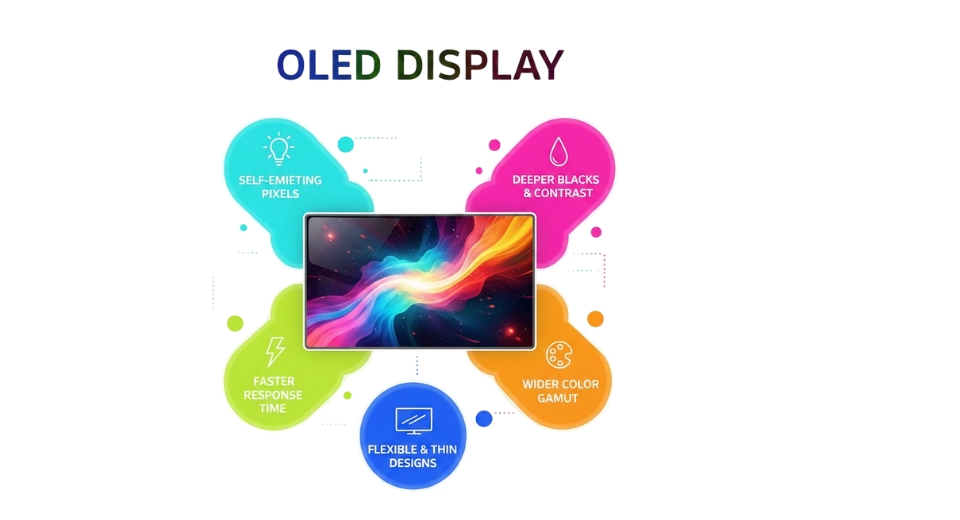MARKET OVERVIEW
The global Handheld Label Printer market and its industry are on the brink of sweeping changes in the future. As businesses and organizations look for better, more portable ways to customize and produce their labeling needs, demand will soar for the handheld label printers. They are purposely small and tough, to print out tags while the user is away from their desk, offering convenience and scalability not seen in regular desktop label printers such as the Dymo LabelWriter Twin Turbo.
Handheld label printers are very valuable tools, across a wide range of industries, including Retail, Healthcare, Logistics, manufacturing and other data collection sectors. These devices will be readily adopted due to their ability to print simple, easy-to-read labels for a range of uses such as product identification, inventory, patient records, or shipping packages. In a retail setting, that means handheld printers will enable store staff to whip up pricing labels or whip through inventory tasks without having to hoof it over to a laser printer at the workstation, saving time. It also speeds up calibration processes. Handheld label printers will be vital in clinical settings for safely verifying patient samples and dispensing liquid medications in the appropriate measured dose containers. Employees in the shipping and other departments will benefit from the ability to generate durable, secure, and reliable printed labels from their desktop or handheld mobile device, in turn keeping pace with the critical demand for track and trace solutions from farm to fork.
Logistics and production can be enhanced significantly through handheld label printers. Handheld label printers will go on solving local labeling problems and play a role in the end-to-end supplu chain in this fragmented market, by which to reduce redundant record entry and errors, at the same time, every part in the supply chain, gain traceability and induce lean management with data, providing the maximum convenience to the users on fast labeling for small batches in various industries.
Technological advancements will have a key role in the progression of the handheld label printer market. Manufacturers will also increasingly build such features into their devices as touchscreens, wireless connectivity, and variable compatibility with label materials. This makes the new generation of handheld label printers more user-friendly and task versatile among different industries.
Not least the increasing importance of sustainability and environmental responsibility will add to the development of handheld label printer construction and its general presentation. Suppliers will use eco-friendly materials and energy-efficient technologies for their products, to complement global sustainability goals. While such schemes might receive higher prices than trendy labeling equipment, they also cut costs and waste over time. An increase in the use of sustainable labels will expedite the broader development of sustainable solutions in the print labelling industry, as well as recycling solutions.
The future handheld inkjet label printer market should also be driven in the wake of increasingly more sophisticated software solutions. Handheld label printers are not a 'one-size-fits-all' solution — different industries require different software solutions that need to connect with your handheld movement and labeling activities. Consequently, as companies of all sizes continue to digitize their operations, the need for seamless integration between the printers and the processes being employed by the staffers, retailers, and point-of-sale systems should not be overlooked. FPO The increasing digitization trend will also lead to companies having a stronger preference for handheld label printers that can easily connect to the enterprise resource planning systems, inventory management etc. The handheld labelling machine industry has seen considerable inroads, spurred by technological advancements and innovative product designs.
Global Handheld Label Printer market is estimated to reach $177.1 Million by 2031; growing at a CAGR of 4.2% from 2024 to 2031.

GROWTH FACTORS
Increasing demand for effective, portable solutions to labeling across the retail, logistics, and manufacturing sectors is holding up growth in the Global Handheld Label Printer market. Improvement in wireless connectivity and battery technology will enhance the functionality and convenience of handheld label printers much further. These developments are events of great importance in the shaping of the trajectory of this market in the near future.
While these are the positive drivers behind its market growth, the high costs associated with advanced models may impede the adoption of handheld label printers among small businesses and individual users. In addition, limitations in respect to the sizes of labels and in printing speed are likely to restrict use for heavy labeling tasks, which could hamper the growth rate of the market.
Within these very challenges lie some of the key opportunities. Developing versatile and user-friendly, handheld label printers, with features that can be tailored to meet industry-specific needs, would better serve industry-specific needs. This approach would not only meet current demands but also encapsulate future requirements by opening up lucrative opportunities for market expansion.
In the future, these growth factors and opportunities shall support the Global Handheld Label Printer market. As industries in process get more focused towards efficiency and flexibility in labeling for such innovative handheld label printers shall rise accordingly. Manufacturers with an ability to innovate and adapt to such changing requirements are very likely to lead the markets in driving advancements and adoption across various diversified sectors.
Even as the market grows strongly in terms of prospects, challenges such as cost and performance limits linger. The stakeholders shall therefore target technological advancement and customized solutions to fully exploit the potential of the Global Handheld Label Printer market.
MARKET SEGMENTATION
By Type
The changing complexion of the Global Handheld Label Printer market can only be assessed by going through its segmentation by type, based on its future prospects. Major segments put under the scanner comprise WiFi and Non-WiFi handheld label printers.
Handheld label printers with WiFi technology are likely to witness tremendous growth. These will enable seamless connectivity and access from anywhere, which will meet the growing demand for flexibility in the industrial and retail sector. WiFi-enabled printers help companies in smoothing business operations, such as real-time data updating and more efficiency in inventory management and labeling processes. This new feature will increase productivity across industries—from warehouses to retail outlets—since tight labels can now be printed quickly and accurately.
Non-WiFi handheld label printers will just continue serving certain niches for which WiFi connectivity may be unnecessary or even needed. They would remain relevant in environments demanding standalone, self-sufficient performance or where security concerns drive offline operations. The market for Non-WiFi label printers will be driven by durability, ease of use, and low cost if industries that value reliability and simplicity over advanced connectivity features are attracted to them.
By Technology
The Global Handheld Label Printer market can rightly be understood only if grasped with reference to its segmentation in terms of technologies involved. It essentially comprises three categories: Thermal, Inkjet, and Impact technologies—all of them having their benefits and areas of applications.
Independent of others, thermal technology is one of the leading technologies in the Global Handheld Label Printer market. The ink in these printers is transferred through heat onto the paper or plastic material. The method provides fast printing speed with a high-resolution output and hence is preferred by all those industries that need quick and efficient ways of labeling their products. Since industries are now racing toward efficiency and sustainability, thermal technology will be highly adopted because of its very low energy consumption and minimal generation of wastes.
Another significant sector in this market is inkjet technology, which functions on the basis of jetting ink droplets onto the printing surface. This technology is very good at producing colored, intricate labels where color accuracy and adaptation for colorful applications are paramount. Indeed, as technological advancements are continuously being made on Inkjet technology—a case in point being increased print speeds and the necessity of using a diversity of substrates—its market share is bound to grow in quite a number of sectors, including retail, logistics, and healthcare.
Although less common in the recent past, impact technology is still in use in certain industrials. Mechanical force is applied to get the characters or text onto the surface, which normally offers durability and resistance. In spite of competition from more developed technologies, Impact Printers continue to be irreplaceable in industries like manufacturing and automotive industries that require a constructed and long-lasting label.

By Application
The Global Handheld Label Printer market is going to grow significantly in the coming years. By application, this market is categorized into the key sectors: Transportation & Logistics, Retail, Healthcare, Telecom, and Others, each of which presents the different opportunities of handheld label printers for improving operational efficiency and meeting evolving consumer demand.
In the domain of Transportation & Logistics, portable label printers will aid in package labeling and tracking simplification. The devices will support real-time information updating to increase the speed and accuracy of logistics operations. Retailers will implement these tools to enhance inventory management and customer service. Handheld label printers will ensure speedy price updates and stock labeling for flawless operations and better customer satisfaction.
Handheld label printers will be integrated with healthcare providers to label medical supplies, patient files, and prescriptions. This will reduce errors and improve quality in the care delivered to patients. The telecom companies will use them in labeling cables and equipment to support network maintenance and expansion efforts.
Moreover, handheld label printers will be heavily utilized in other industries such as manufacturing and education. For instance, manufacturers will utilize them to label and track their products within factories to make production easier. Some educational institutions will take them up for organizing resources and labeling educational material
The handheld label printer market looks forward to continuous innovation with enhanced developments in technology. Handheld printers that will hit the markets in the future will have advanced connectivity options that are user-friendly. Integration with IoT platforms will facilitate remote monitoring and control, hence increasing operational efficiency across various sectors.
REGIONAL ANALYSIS
In analyzing the regional landscape of the Global Handheld Label Printer market, it becomes evident that geographical segmentation plays a crucial role in understanding market dynamics and trends. It is divided into key regions that constitute North America, Europe, Asia-Pacific, South America, and Middle East & Africa—each of these being an independent economic and industrial hub.
Beginning with North America, the region comprising the United States, Canada, and Mexico will likely have a lucrative market in handheld label printers. More specifically, the U.S. is at the top, driven by superior technology adoption and robust industrial infrastructure, which will continue to lend an impetus to growth in the forecast period. At the same time, the growing retail sector and increasing adoption of advanced labeling solutions in Canada and Mexico are also boosting market growth for this region.
Moving over to Europe, including major economies like the UK, Germany, France, Italy, and the rest of Europe, the handheld label printers market is more likely to grow at a decent pace. These countries do feature significantly in sectors such as manufacturing, logistics, and retail, where labeling efficiency is taken as one of the necessities in securing operational efficiencies and regulatory compliance.
In the Asia-Pacific region, including India, China, Japan, South Korea, and the rest of Asia-Pacific, the rapid pace of industrialization and booming e-commerce activities are proving to be a fillip to the demand for handheld label printers. There is an ensuing requirement in countries like China and India for an efficient labeling solution that keeps supply chains in order with rapidly developing retail infrastructure and logistic facilities.
South America, with key markets in Brazil, Argentina, and the rest of South America, is posting a surge in demand for handheld label printers, driven by booming retail markets and increasing investments in industrial automation. These shall be major drivers of market growth in this region.
Lastly, the Middle East & Africa region, which includes GCC Countries, Egypt, South Africa, and the rest of Middle East & Africa, is emerging as a potential market for handheld label printers.Processes for economic diversification and investments in infrastructure are therefore opening up opportunities for market players to meet the changing labeling requirements of the region.
One can distinctly point out the regional analysis that evokes diversified growth opportunities for the Global Handheld Label Printer market across various geographical regions. In every region, there could be unique challenges and opportunities presented by economic factors, industrial developments, and technological advancements. Strategic expansions and technological innovations would turn out to be quite critical in holding market share and sustaining that growth in the concerned regions as the market keeps evolving. In the competitive landscape of the Global Handheld Label Printer market, several key players stand out in their significant contribution and advancements in developing technology. Such companies play a vital role in directing industry direction as well as influencing market trends.
Now, brother is synonymous with the innovative approach to printing solutions, maintaining a lead by User-friendly designs and functionality. Thus, through quality and reliability, it commits time to be at par with market competition.
DYMO joins Newell Brands in striking, for business of all walks, a balance between practicality and innovation in offering versatile label printing solutions. Their products are very well known for ease of use and efficiency— sudo-wide—making them some sort of yardstick for consumers.
With its full-range handheld label printers, KINGJIM is second to none in helping users deliver customized solutions for both professional and personal applications. Its underlining philosophy of product customization and durability easily projects the company as one of the main competitors in the global landscape.
CASIO uses its technology in handheld label printers to drive high-end features for maximum efficiency in terms of user experience. Focus on precision and functionality has been their motto, keeping them alive with a large customer base across the globe.
With expertise in printing technologies, Epson incorporates such experience into handheld label printers and introduces high-performance devices to cater to diversified market needs. Their commitment to the very stringent requirements of sustainability and innovation makes them stand out from others in this competitive landscape.
3M, known for its adhesives and labeling solutions, brings years of broad industry experience into handheld label printers. The performance is powerful, and the reliability is solid in many applications. This spectrum ranges from the retail storefront to the industrial manufacturing facility.
Brady Corporation specializes in identification solutions. It produces rugged and customizable handheld label printers built to withstand tough working conditions. At the forefront, compliance safety issues keep the company competitive in niche markets.
The other participants within the global handheld label printer market include Citizen, Zebra, Honeywell, WEWIN, and GAINSCHA. Each of these firms has different strengths and capabilities to serve the evolving needs of consumers. These companies further innovation with ongoing research and development that allows them to pinpoint future trends and needs for label printing technology.
With the continuous development of the market, these competitive players will continue to innovate and increase product lines targeting the capture of new opportunities for further consolidation in the leadership of the Global Handheld Label Printer market. Their combined effort is setting the future character of the industry in terms of technological innovation and improvement of user experience worldwide.
Handheld Label Printer Market Key Segments:
By Type
- With Wifi
- Non-Wifi
By Technology
- Thermal
- Inkjet
- Impact
By Application
- Transportation & Logistics
- Retail
- Healthcare
- Telecom
- Others
Key Global Handheld Label Printer Industry Players
WHAT REPORT PROVIDES
- Full in-depth analysis of the parent Industry
- Important changes in market and its dynamics
- Segmentation details of the market
- Former, on-going, and projected market analysis in terms of volume and value
- Assessment of niche industry developments
- Market share analysis
- Key strategies of major players
- Emerging segments and regional growth potential








 US: +1 3023308252
US: +1 3023308252






